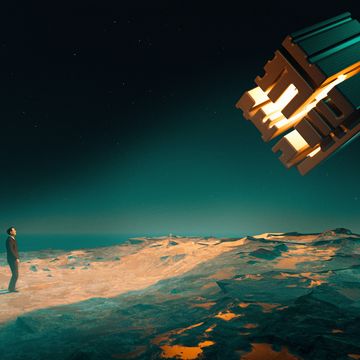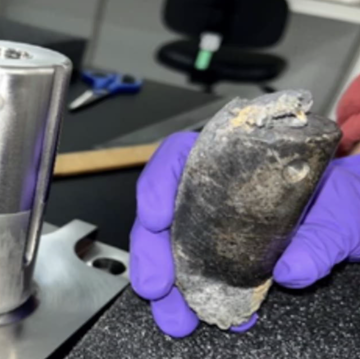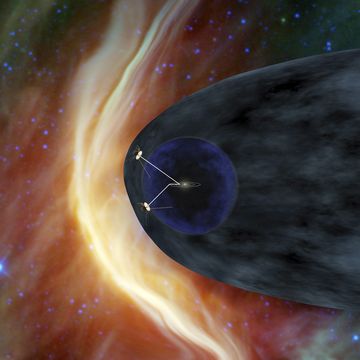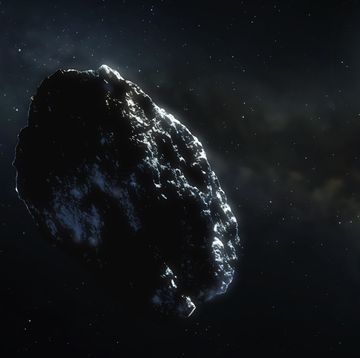Nope, that's not a translucent jellyfish floating in the deep ocean. It's actually a tiny fireball in space. Astronauts are igniting droplets of fuel to learn more about how soot forms and how different mixtures of fuel burn in space. Understanding the process may help engineers build safer spacecrafts and design more efficient fuels.
During this round of experiments, called FLEX-2, astronauts are observing flames under different conditions by changing the air flow, the kinds of fuel, and the mixture of gases in the combustion chamber. The scientists will perform at least 250 tests, recording all the action with a camera that makes all these neat little videos possible.
On Earth, gravity plays a huge role in how fires burn. Hot, buoyant gases from a flame rise up and draw cool air to the bottom of the fire. As a result, fires that spread upward have long, flickering flames. But in microgravity, flames form into floating olive-sized fireballs.
Astronaut Reid Wiseman shared this Vine and aptly described the flame bubble as a jellyfish:
:
During the last run of FLEX experiments, astronauts discovered something bizarre: The droplets of fuel continued burning for minutes, long after they were too faint to see. These are "cool flames." Fires typically burn at 2,200 to 3,000 degrees Fahrenheit, but cool flames burn at temperatures between 440 and 980 degrees F and produce dangerous chemicals such as formaldehyde and carbon monoxide. Cool flames can exist on Earth, but they usually burn out immediately.
Because microgravity forms fires into symmetrical spheres, they're much easier to study than flickering flames on Earth. Scientists may be able to use what they learn from FLEX to design lighter and cheaper fuels for space travel, since we'll know more about which fuels burn efficiently and produce less soot. The experiments may also improve fire safety on spacecraft. Even though there hasn't been a fire on the International Space Station, the Russian Space Station Mir experienced a blaze in 1997 when a defect in an oxygen-producing canister caused it to ignite.
A flame on Earth (left) versus one in space (right).













